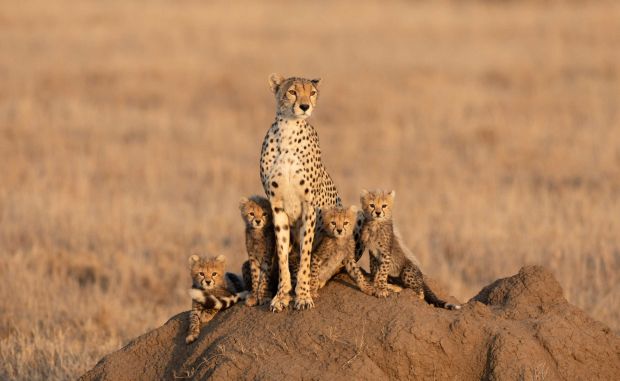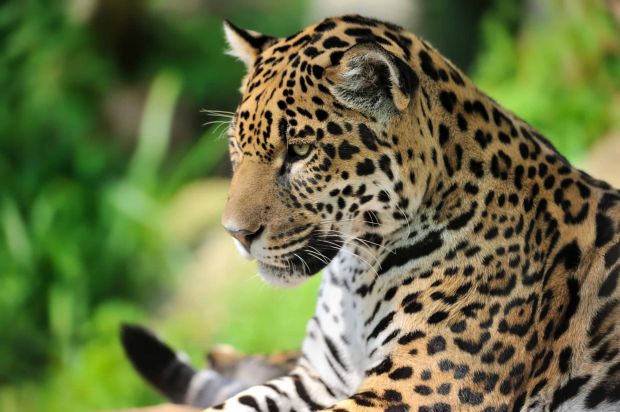Hearing in Big Cats

Big cats, the apex predators of the animal kingdom, have long fascinated researchers, wildlife enthusiasts, and conservationists alike. Among their many remarkable adaptations, their acute hearing stands out as a crucial survival tool. Understanding how big cats perceive sound not only enriches our appreciation of these majestic creatures but also provides insight into their hunting strategies, social behaviors, and ecological roles.
The Anatomy of Hearing
The auditory system of big cats includes specialized structures that enhance their ability to detect sounds across various frequencies. Unlike humans, who mainly hear sounds within the range of 20 Hz to 20 kHz, big cats can perceive sounds at much higher frequencies, often up to 65 kHz. This heightened sensitivity allows them to pick up the subtle noises made by their prey, a skill that is essential for successful hunting.
The external ear, or pinna, of big cats is large and funnel-shaped, which plays a pivotal role in sound localization — the ability to determine the origin of a sound. The flexibility of the pinna allows these predators to swivel their ears independently, tuning into specific sounds that would go unnoticed by many other animals.
Hunting Strategies and Prey Detection
Big cats have evolved to become stealthy hunters, and their acute hearing is a cornerstone of their predatory skills. For instance, while stalking prey, leopards and lions rely heavily on their hearing to detect the rustling of grasses or the slightest movements of potential targets. This stealth is vital for a successful ambush, as many prey species rely on vision and olfactory cues to detect danger.
In addition to detecting prey, big cats use their auditory acuity to communicate with each other. Roars, growls, and other vocalizations can convey various messages, including territory claims, warnings, and mating calls. The ability to hear these sounds, often over great distances, is essential for maintaining social structures and ensuring reproductive success.
The Role of Hearing in Social Interactions
For social big cats like lions, hearing plays a pivotal role in their complex social interactions. Lions live in prides, and effective communication is vital for their cooperative behaviors, such as hunting in groups or caring for cubs. The deep, resonant roars of male lions can travel several miles, allowing them to establish their presence and deter rival males from encroaching on their territory.
Conversely, solitary big cats such as tigers and leopards also rely on their hearing for social functions. They may engage in vocalizations during mating seasons and communicate their location and readiness to mate. Even without direct contact, these auditory signals foster social interactions and alliances crucial for survival.
Impact of Habitat and Human Activity
The habitats of big cats, ranging from the dense jungles of Southeast Asia to the expansive savannas of Africa, influence their auditory perceptions. In densely forested areas, sound can travel differently compared to open plains, impacting how these animals hunt and communicate. Unfortunately, human activities such as deforestation, urbanization, and noise pollution pose significant challenges to big cats’ hearing.
As habitats are disrupted, the quality of soundscapes can change drastically. High levels of noise from vehicles, machinery, and human activity can mask the sounds big cats rely on to locate prey or communicate with others. This not only affects their hunting efficiency but can also lead to increased stress and disorientation.
Conclusion
The hearing ability of big cats is a testament to their evolutionary design, honed over millennia to survive in often challenging environments. As apex predators, their acute auditory skills enable them to fulfill their ecological roles, shaping the dynamics of their ecosystems. However, as human activities increasingly encroach upon their territories, understanding the impact of noise and habitat degradation becomes paramount.
Conservation efforts should prioritize not only the preservation of habitats but also the protection of the acoustic environments that allow big cats to thrive. By fostering awareness of the critical role of hearing in the lives of these magnificent creatures, we can take more informed steps towards their conservation and ensure that the silent symphony of the savanna continues to echo for generations to come.



